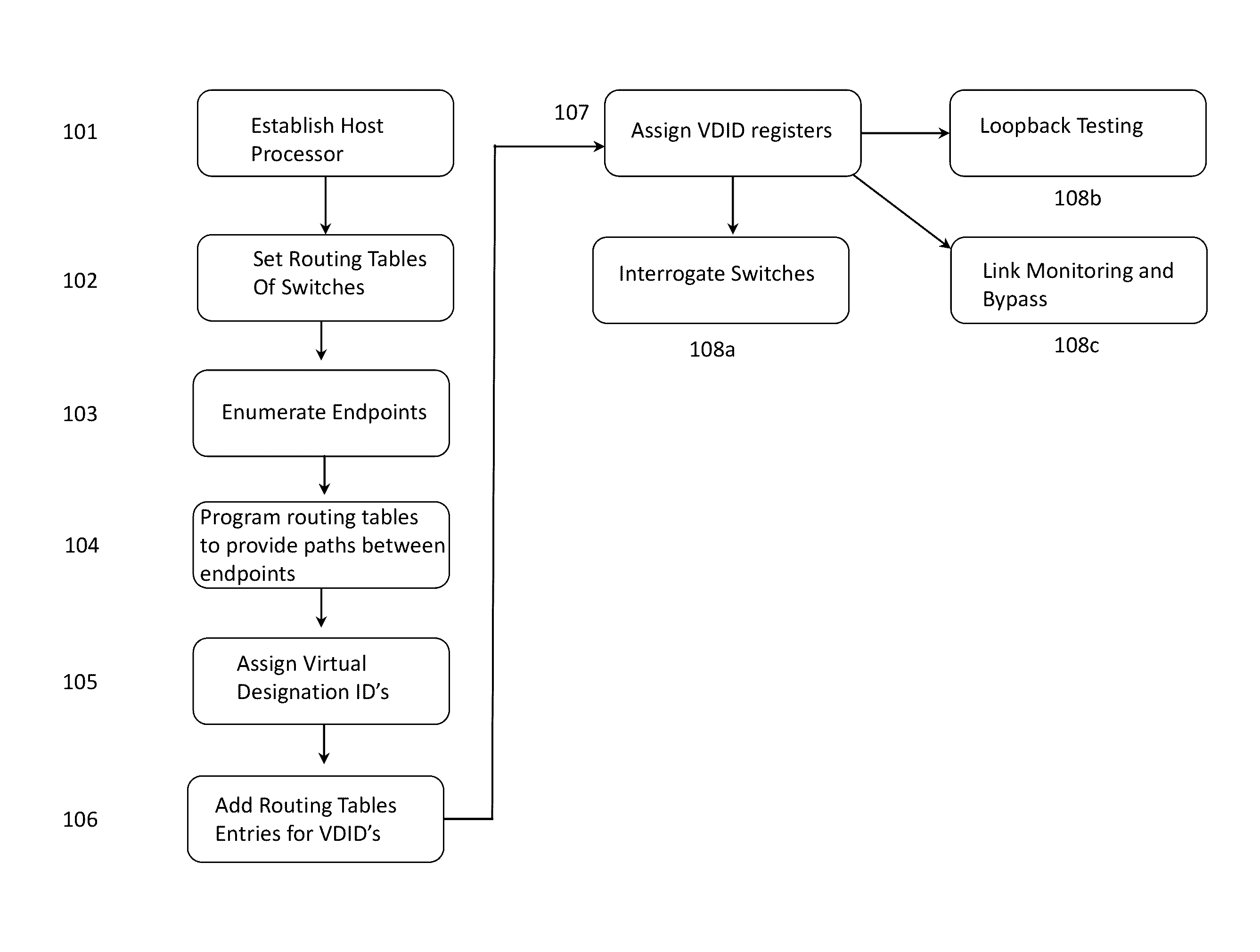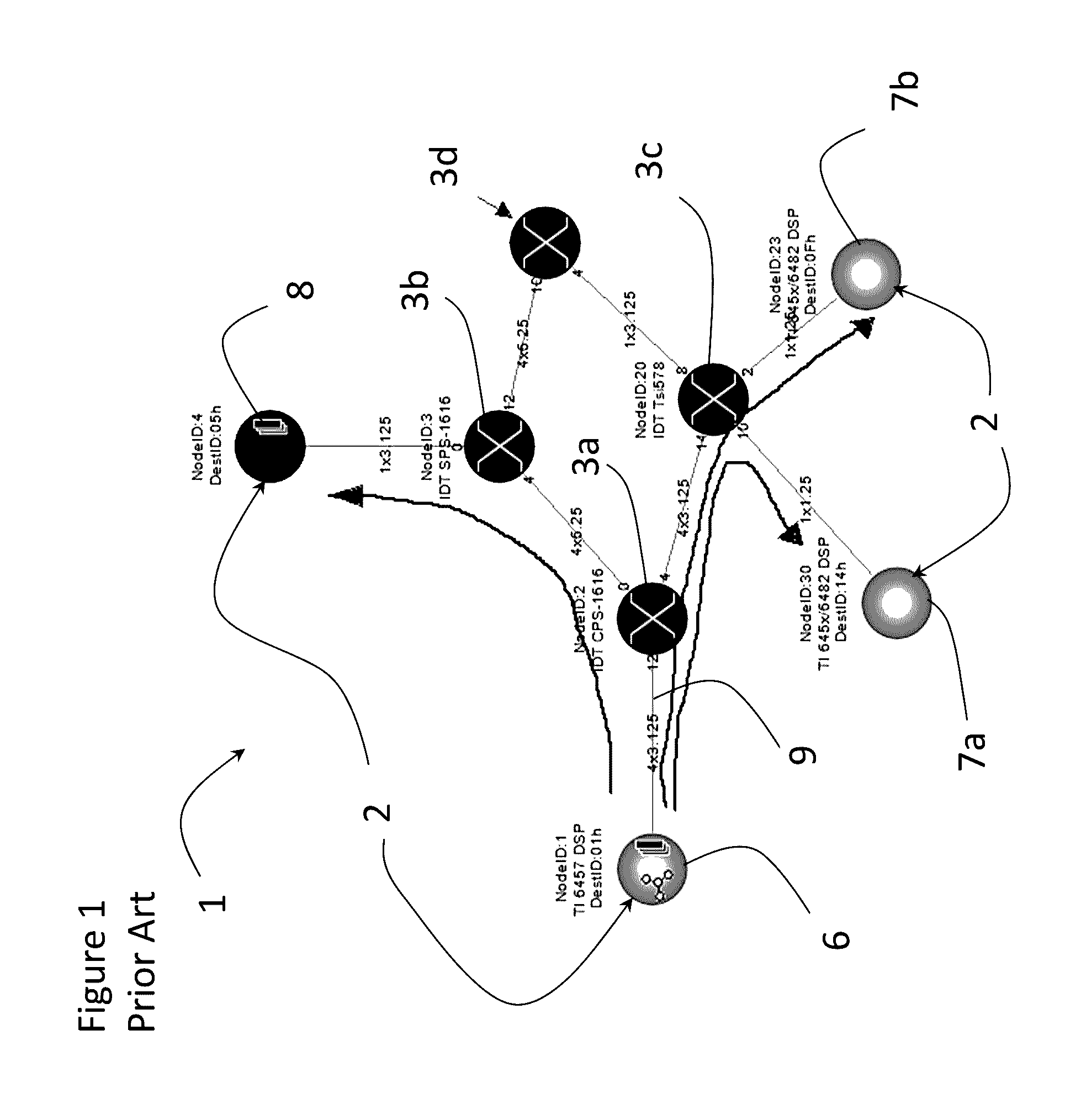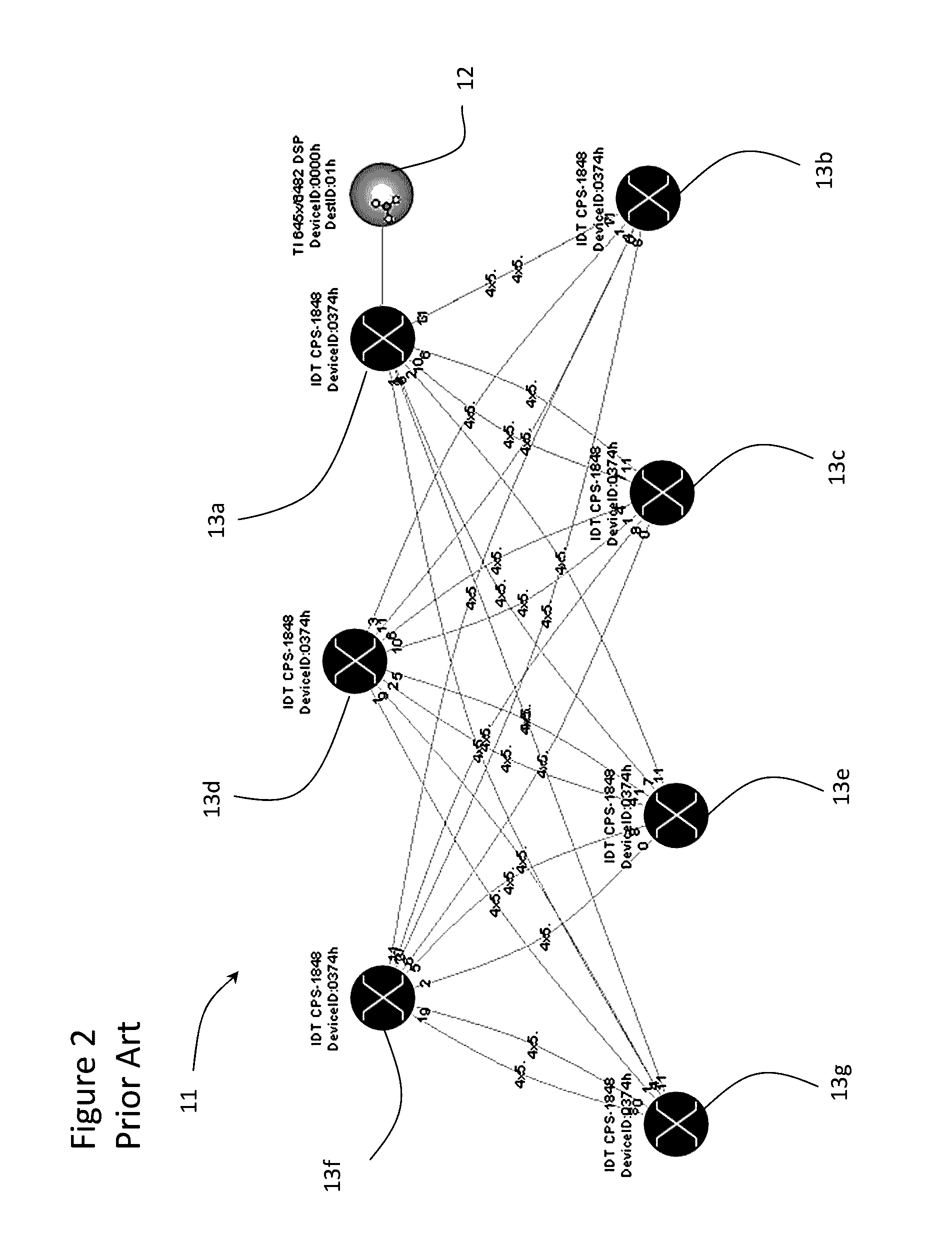Virtual destination identification for rapidio network elements
a network element and virtual destination technology, applied in the field of system for providing rapidio network element virtual destination identification, can solve the problems of inability to utilize the normal method of an existing routing path to an endpoint b>2, > or through a switch, and the number of hops
- Summary
- Abstract
- Description
- Claims
- Application Information
AI Technical Summary
Benefits of technology
Problems solved by technology
Method used
Image
Examples
Embodiment Construction
[0062]The above problems exist because destination-based packet-routing systems, such as RapidIO, only define one path between an originating endpoint and a final endpoint based on the final endpoint's lone destination ID and routing tables preprogrammed and stored in individual switches positioned between the two endpoints. Accordingly, it is not possible using conventional means in a RapidIO network for the path between two endpoints to be dynamically altered, an endpoint to send data to itself, and to enumerate switches with a destination ID.
[0063]With reference to FIG. 3, the concept of virtual destination IDs (VDIDs), in accordance with the present invention, is incorporated into a RapidIO network 21, which included endpoints 22, switches 23a to 23d, and host processor 26. The endpoints 22 can be any form of endpoint, as hereinbefore discussed, but for illustrative purposes are defined as bridges 27a and 27b, and memory 28a and 28b. The VDIDs solve the above problems because us...
PUM
 Login to View More
Login to View More Abstract
Description
Claims
Application Information
 Login to View More
Login to View More - R&D
- Intellectual Property
- Life Sciences
- Materials
- Tech Scout
- Unparalleled Data Quality
- Higher Quality Content
- 60% Fewer Hallucinations
Browse by: Latest US Patents, China's latest patents, Technical Efficacy Thesaurus, Application Domain, Technology Topic, Popular Technical Reports.
© 2025 PatSnap. All rights reserved.Legal|Privacy policy|Modern Slavery Act Transparency Statement|Sitemap|About US| Contact US: help@patsnap.com



